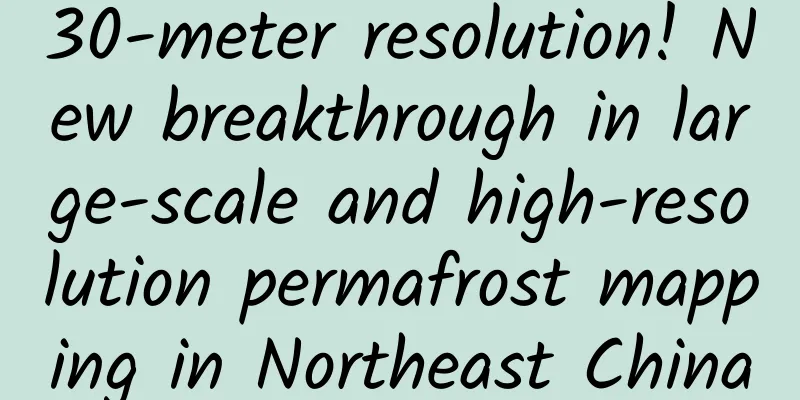The barren saline-alkali land has actually changed the "appearance" of the coastline?

|
Saline-alkali land refers to land with excessively high soluble salt content in the soil, which has adverse physical, chemical and biological properties, causing the growth of most plants to be poisoned and inhibited to varying degrees, or even unable to grow and survive. my country has about 1.5 billion mu of saline-alkali land, of which about 500 million mu is usable. All regions have been making unremitting efforts to fully tap the potential of saline-alkali land development and utilization. In recent years, many barren saline-alkali lands have begun to become full of vitality. The rooting of green plants has not only changed the "appearance" of the coastline, but also provided a vivid example for the combination of my country's blue carbon economy with wetland construction and shoreline restoration. But how to grow plants on saline-alkali land? It is not easy to grow grass in severely saline-alkali land. Localities have made the best use of the value of saline-alkali land according to local conditions. For example, Ningxia has adopted a combination of microorganisms and forage grass planting to repair and improve saline-alkali land. Sow Hunan millet in severely saline-alkali land. Even if it grows sparsely, the straw can be directly returned to the field after it grows up. Repeat this process for three years, and the soil properties of the saline-alkali land will be reduced from medium to severe to medium, and then alfalfa can be planted. Using medium and severe saline-alkali land to grow forage can avoid the phenomenon of "competing with grain for land" and truly realize "demanding protein from saline-alkali land." Today, the saline-alkali beaches in many places in Ningxia have presented a harmonious picture of ecological and economic benefits coexisting in harmony. Not only plants are grown in saline-alkali wastelands, but Shandong Weifang has also turned the once barren saline-alkali land into a fertile field. In recent years, Weifang City has comprehensively used saline-alkali land engineering technology, biotechnology, water-saving irrigation technology, etc. to reduce and control the underground bitter and salty water level in farmland, remove excessive salt in the soil, and improve the soil structure of saline-alkali land. By increasing the application of organic fertilizers and returning straw to the fields to improve the soil, the soil fertility is improved, and salt-alkali resistant varieties such as wheat, corn, rice, and soybeans are actively bred. In 2023, after continuous improvement, 26,000 acres of arable land in the jurisdiction had a bumper harvest. In the golden autumn season, harvesters shuttled through the golden corn fields, a busy scene. Shandong Weifang has turned the dream of saline-alkali land as a "potential granary" for increasing grain production into reality. Data picture: Weifang City, Shandong Province, uses the mature rice-shrimp symbiosis theory to accelerate the improvement of saline-alkali land The saline-alkali land and brackish water, which were once useless, can actually create such huge economic benefits. In addition to the bumper harvest, in Tianjin, the sewage reservoir, which was once "one-third saline-alkali wasteland, one-third abandoned salt pan, and one-third polluted water", has also completed a gorgeous transformation. After ecological restoration, the 2.15 million cubic meters of stock wastewater in the area was treated and discharged in compliance with the standards, and the 3.85 million cubic meters of polluted sediment was harmlessly treated and resource-utilized, becoming a vivid annotation of the transformation process of Jinghu. Today, the local area presents a beautiful picture of the ocean and several green islands connected, blue and green interweaving, and the ripples rippling from the sea to the feet of tourists, becoming the first area in Tianjin to be selected as an excellent case of beautiful bays. More and more places have begun to transform saline-alkali wasteland, completing one gorgeous transformation after another. Beautiful four-season flower fields, colorful coastal landscapes, the former saline-alkali wasteland has now transformed into a beautiful bay; red apples, yellow corn, purple grapes... fertile fields, full of vitality. We will continue to fully promote the transformation of saline-alkali wasteland and outline a beautiful picture of ecological pastoral. Review expert: Tu Qiang, deputy editor of Ocean Publishing House China Association for Science and Technology Department of Science Popularization Xinhuanet Co-production |
Recommend
In the era of universal live broadcast, celebrities have their own unique way of playing live broadcast
Nowadays, in the development of live broadcasting...
Why are we descendants of the dragon? The truth is a big gossip!
Mixed Knowledge Specially designed to cure confus...
Tencent Advertising's guide to attracting customers!
1. Industry Background Preview 1. Development tre...
Spending the Winter Solstice on Mars? It Did!
The northern hemisphere of Mars, where the Zhuron...
Operational tips: How to use new media to promote products
Before explaining new media operations, let’s fir...
Where can Ningbo students drink and taste tea? I'll tell you
Recommended places for drinking tea and spa in Ni...
A Guide to KOL Advertising on TikTok
What is Douyin KOL? Users who frequently post vid...
Fight against counterfeiting! These fake dining tables have made me suffer!
The annual 315 International Consumer Rights Day ...
Have you heard of "molecular cuisine"? Maybe you have already tried it!
Review expert: Meng Meng, associate researcher at...
How to write a title for a short video? What are the tips for writing short video titles?
What kind of copywriting is easy to attract audie...
What are the Android emulator detection methods?
The general method of detecting the Android emula...
Information flow advertising delivery is unstable, how to optimize it?
Written in front In response to recent feedback fr...
Spend one hour less time on your phone every day and you’ll live a happier and healthier life
Over the past decade or so, smartphones have beco...
WeChat official announcement: Mini Program regular review is suspended during the Spring Festival and will resume on February 7
As the Spring Festival approaches, many companies...
Galapagos, magical animals change!
Galapagos A world away But the islands are extrem...







![[Smart Farmers] From the Sea to Shandong Cuisine Table - The Magical Journey of Sea Intestines](/upload/images/67f236464da6a.webp)

